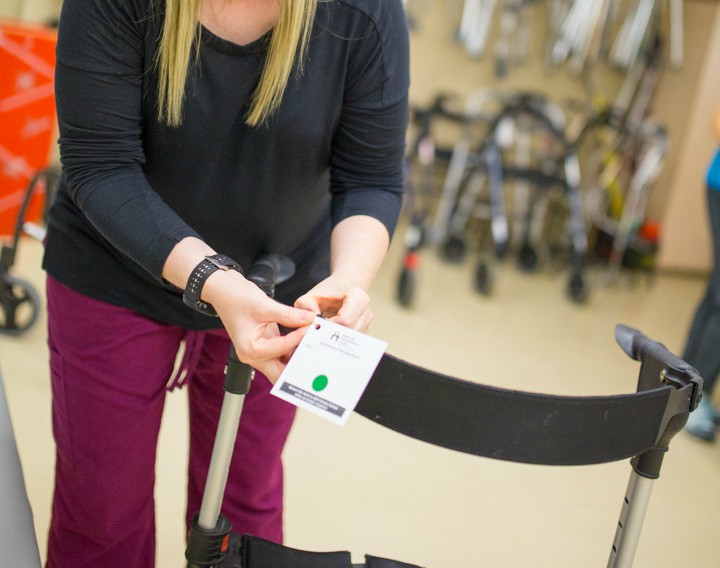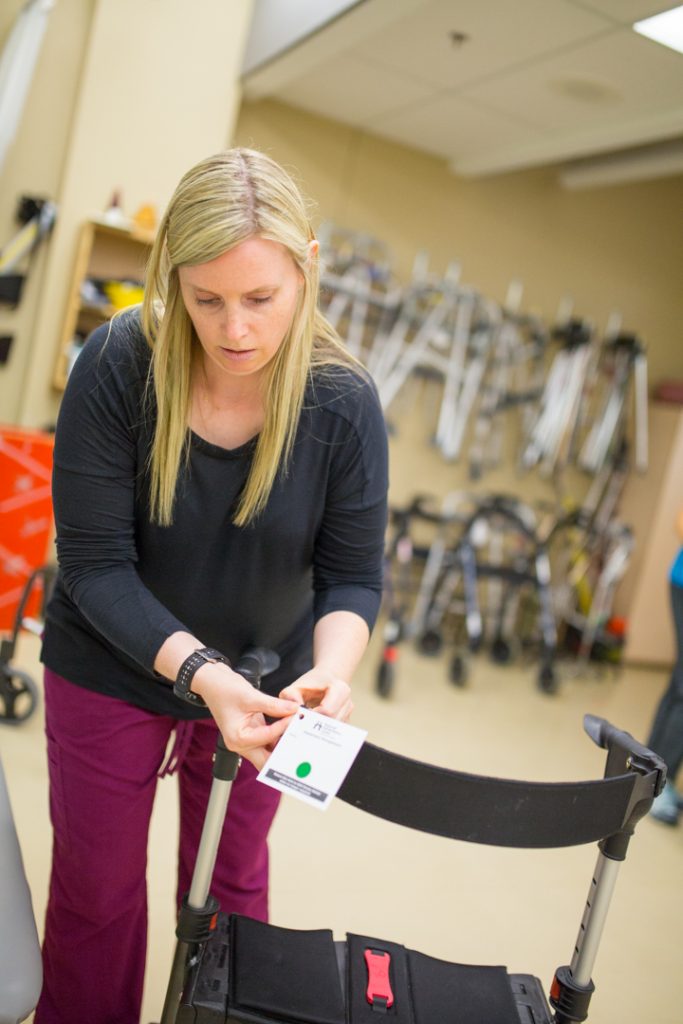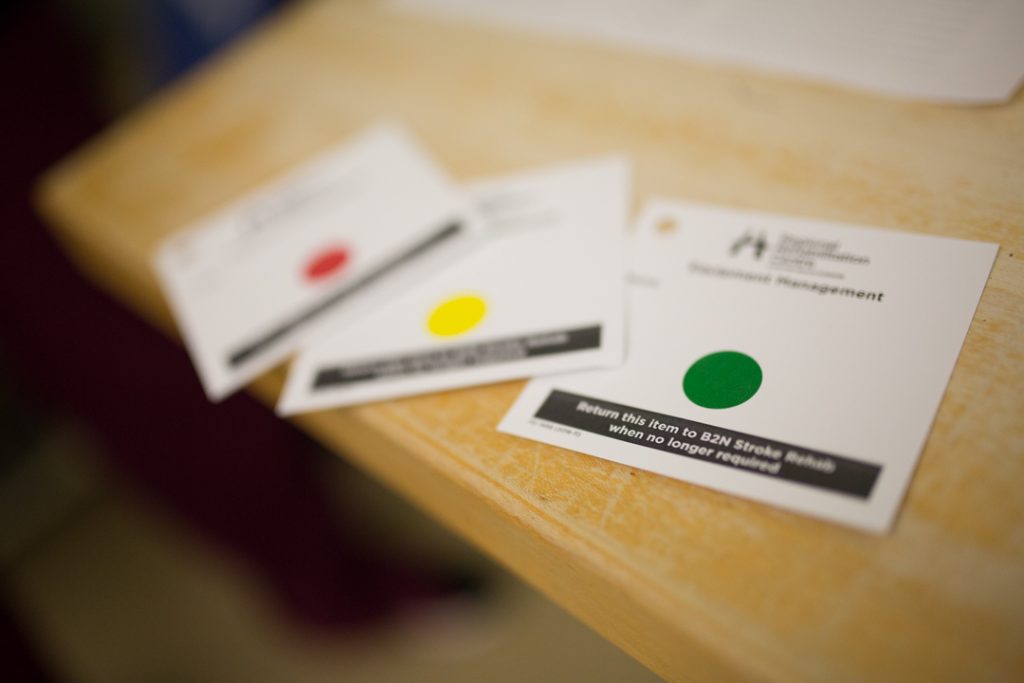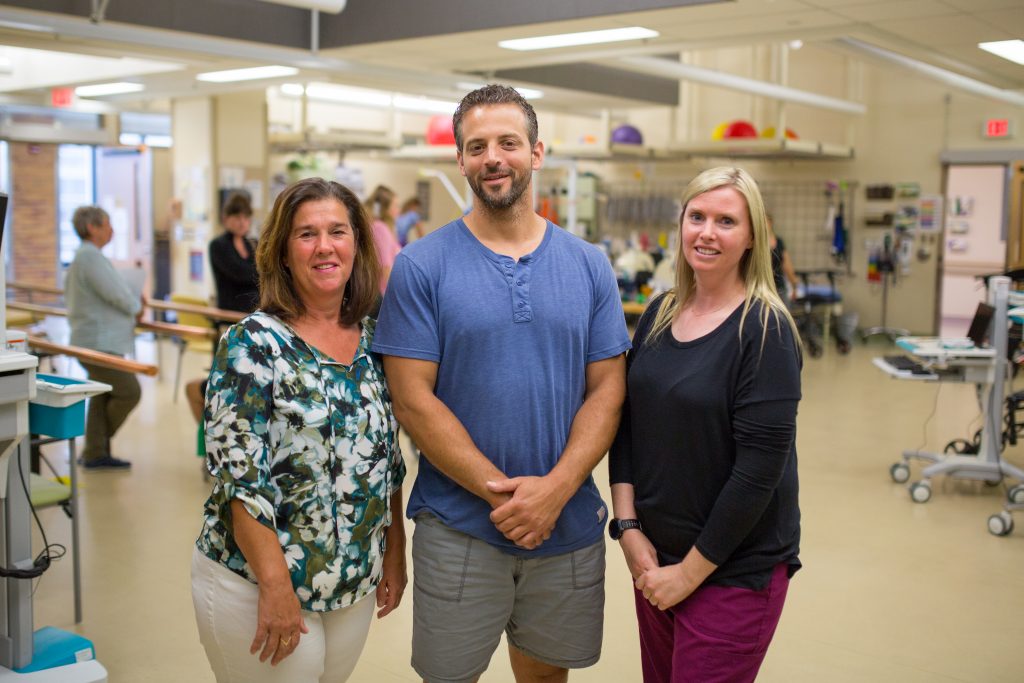
Stroke team gets a green light on mobility tracking
Getting moving is important for patients recovering from a stroke. In the Integrated Stroke Program at Hamilton Health Sciences’ Regional Rehabilitation Centre, it’s a core part of rehabilitation. But it has to be done carefully so patients don’t risk injury by taking on more than they can handle.
Staff in the program found it challenging to keep track of the different levels of mobility support needed by each patient. “Unless you are the staff member directly involved with a specific patient, it is difficult to know the level of assistance a patient requires when they are mobilizing,” says Elizabeth McKay, a physiotherapist on the unit. “We brought this concern to a CQI meeting so we could address it and create a better system.”

The stroke rehabilitation unit is part of a program at Hamilton Health Sciences (HHS) called Continuous Quality Improvement (CQI). It’s a ground up management system that empowers front-line staff to raise issues and opportunities with management.
We brought this concern to a CQI meeting so we could address it and create a better system.
Those opportunities are categorized based on the resources needed to address them, and a team is assigned to work on a solution. The model has been rolling out in phases across HHS and has enable teams to make improvements more efficiently, with lasting results.
“We use our collective knowledge to implement ideas quickly to improve patient safety, assist with quality improvement and motivate patients towards achieving their goals,” Elizabeth says.
Once the improvement opportunity was raised though CQI, Elizabeth and her colleagues set to work creating a system that would help communicate the level of mobility assistance a patient needs quickly and reliably.
“The solution was a collaborative effort between the therapy and nursing staff, based on our collective experiences on other wards or hospital settings, and by using our own creative ideas,” notes Elizabeth.
The group landed on a “traffic-light-sticker-system” to indicate a patient’s mobility status.
Red = assistance
Yellow = supervision
Green = independent

The coloured stickers are placed on tags attached to a patient’s mobility device, like a wheelchair or walker. It allows staff to quickly identify a patient’s status so they can determine whether that person can safely move on their own, or if they need assistance or supervision.
In addition to improving patient safety and communication for the staff, it provides a helpful cue to the patient and their visitors so they know when to ask for help.
“We’re really happy with the outcome,” Elizabeth says. “It has even led to a bonus outcome that we weren’t expecting.”
In addition to helping staff, patients and visitors identify mobility status, the coloured stickers have become a motivator for patients. As they work on their rehabilitation goals, people are eager to move up through the colour system on their way to achieving independence.

